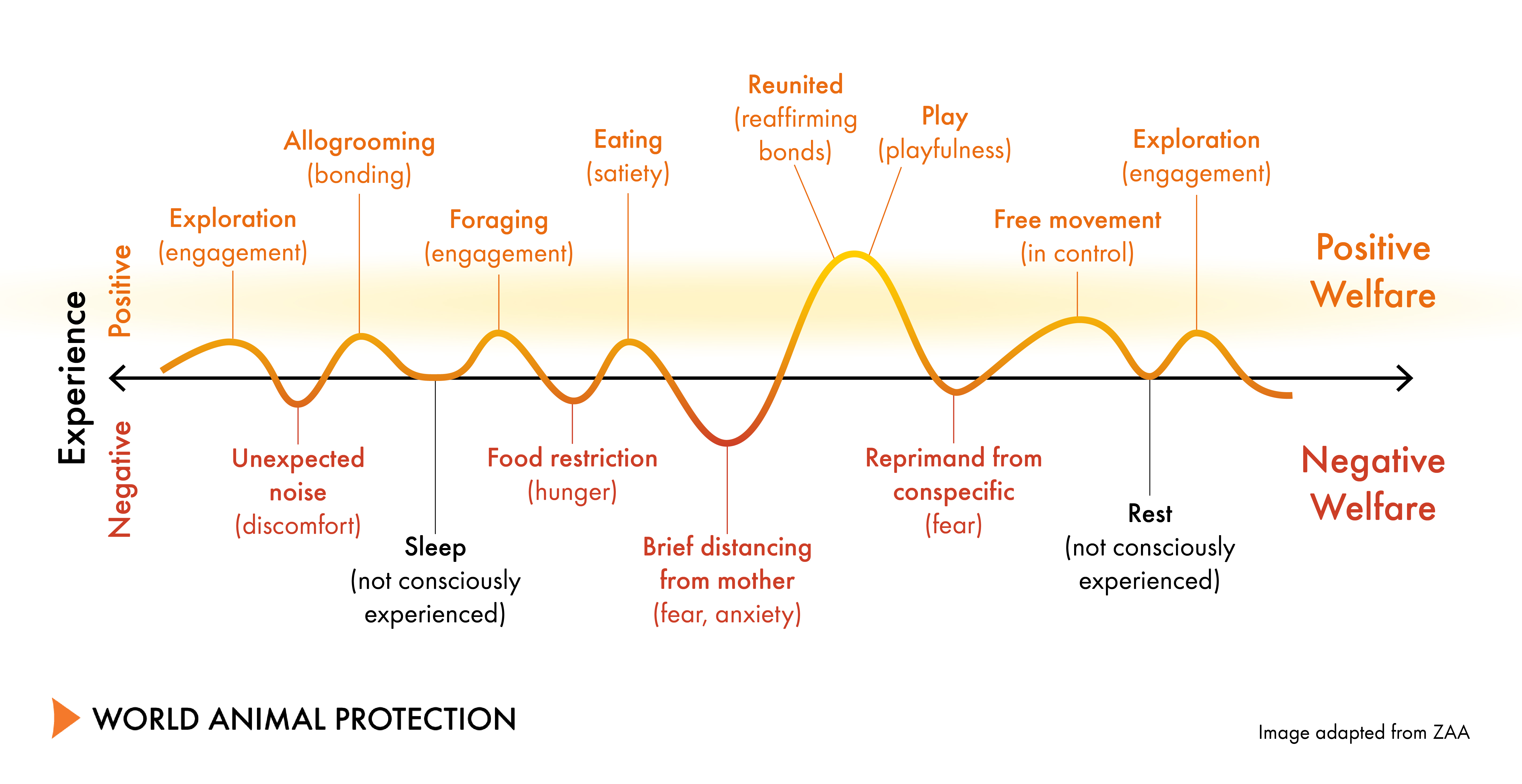
What is the difference between the Five Domains Model and the Five Freedoms of animal welfare?
Blog
How can we assess an animal’s welfare? With tools like the Five Freedoms and Five Domains Model we can start to evaluate an animal’s wellbeing.
What are the Five Freedoms of animal welfare?
The Five Freedoms is the earliest model developed to evaluate animal welfare. This concept is widely known and is enshrined in many laws and regulations around the world. Many countries, jurisdictions, and organizations like the World Organisation for Animal Health, have incorporated the principles of this model into their guiding policies.
The Five Freedoms represent five key aspects of animal welfare for animals under human control (captive wildlife, farmed animals, pets), they include:
- Freedom from hunger and thirst: by ready access to fresh water and a diet that maintains full health and vigor.
- Freedom from discomfort: by providing an appropriate environment including shelter and a comfortable resting area.
- Freedom from pain, injury or disease: by prevention or rapid diagnosis and treatment of medical problems.
- Freedom to express normal behaviour: by providing sufficient space, proper facilities and company of the animal’s own kind.
- Freedom from fear and distress: by ensuring conditions and treatment do not cause mental suffering.
This model of animal welfare has its limitation since there is an assumption built into the framework that the absence of negative states would ensure high welfare, which is not necessarily true. Thus, the Five Domains Model was established to address the limitations of the Five Freedoms. Two pigs laying in mud A pig on a high welfare farm where they are able to display their natural behaviours, such as rolling around in the mud!
What is the Five Domains Model of animal welfare?
The Five Domains Model was developed in order to comprehensively and systematically identify different forms of welfare issues.
The Five Domains of animal welfare include:
- Nutrition: animals have opportunities to access unrestricted, sufficient, species-specific, balanced, varied, and clean food and water.
- Environment: the animal’s environment provides comfort through temperature, substrate, space, air, odor, noise, and predictability.
- Health: animals are in good health, and illnesses and injuries are prevented, or immediately and appropriately treated.
- Behaviour: animals are able to express a full range of natural behaviours such as exploration, foraging, bonding, playing, retreating, and others.
- Mental State: by presenting positive situations and/or solutions in the previous four functional domains, the mental state of the animal should benefit from predominantly positive states, such as pleasure, comfort, or vitality while reducing negative states such as fear, frustration, hunger, pain, or boredom.
The first four domains focus on factors that can contribute to specific negative or positive emotions and experiences, which contribute to the animal's mental state, as evaluated in the fifth domain.
For example, if an animal has access to a wide variety of foods they may experience the pleasures of different tastes, smells, and textures – a positive welfare state. Conversely, if an animal has restricted food access, they may experience boredom due to a lack of stimulation or even hunger – a negative welfare state.
 Diagram adapted from ZAA.
Diagram adapted from ZAA.
This diagram shows how animal welfare is a continuum.
An animal’s daily experiences continuously contribute to an animal’s overall welfare. Just like humans, it’s normal to experience some negative experiences (e.g., thirst), but the goal is to ensure that negative experiences can be solved (e.g., access to clean and unlimited water sources) so that an animal’s overall welfare is positive.
The Five Domains model goes further than the Five Freedoms in that it places more of an emphasis on an animal’s mental state and ability to have positive experiences. It highlights that emotional needs are equally important as physical needs, and that physical needs can impact emotions.
All animals deserve a good life.
Continue learning:
What is animal welfare?
Blog
Animal welfare is a complex and multi-faceted subject with many definitions. Take a deep dive into animal welfare science and why it's critical to improving the lives of animals.
What is animal sentience?
Blog
Animal sentience refers to the capacity of animals to have subjective experiences, thoughts, feelings, and individual personalities.
Animal rights vs. animal welfare
Blog
The terms “animal rights” and “animal welfare” are often used interchangeably, however, they represent different concepts.


